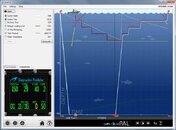DuboisP
Contributor
why not doing as V-Planner, MV-Plan or even Suunto Dive Planner ?
choose the mixes, choose the Gradient Factors (MVPlan), choose Conservative (V-Planner) or not, choose Deep Stops, choose Bulhmann coefficient for saturation/desaturation.
choose set of mixes, size of bottles
in some words : COPY what's invented elsewhere
i don't think there is a lot of things to invent (again).
but i'm working a lot with US people, and they often have the "not invented here syndrome"
did in USA ? perfect !
did elsewhere ? bad !
when digging a little, not so perfect....
choose the mixes, choose the Gradient Factors (MVPlan), choose Conservative (V-Planner) or not, choose Deep Stops, choose Bulhmann coefficient for saturation/desaturation.
choose set of mixes, size of bottles
in some words : COPY what's invented elsewhere
i don't think there is a lot of things to invent (again).
but i'm working a lot with US people, and they often have the "not invented here syndrome"
did in USA ? perfect !
did elsewhere ? bad !
when digging a little, not so perfect....






